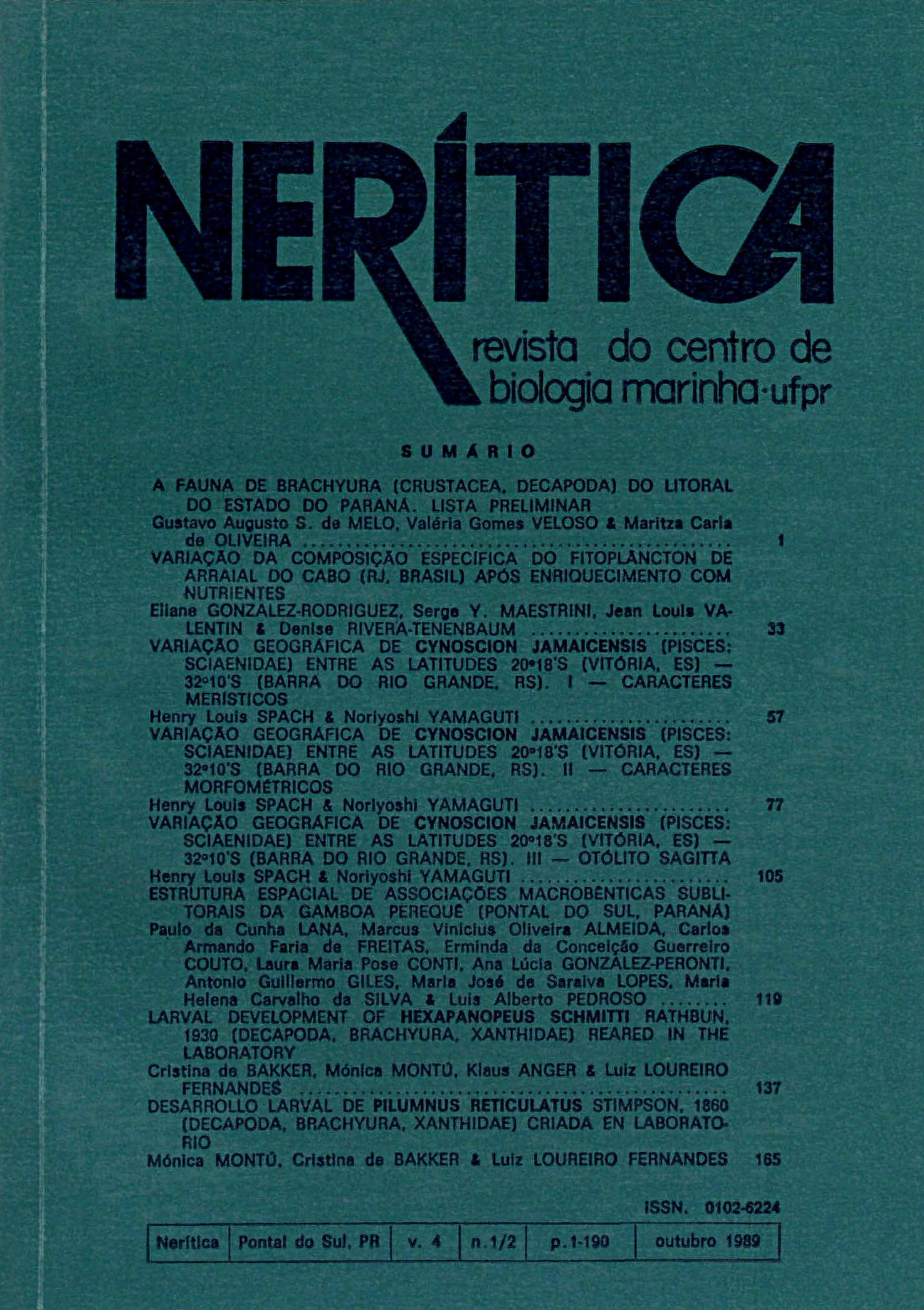Larval development of Hexapanopeus Schmitti Rathbun, 1930 (Decapoda, Brachyura, Xanthidae) reared in the laboratory
DOI:
https://doi.org/10.5380/rn.v4i1/2.84996Palavras-chave:
Brachyura, Xanthidae, desenvolvimento, Paraná (Brasil)Resumo
Larvas da espécie sulamericana Hexapanopeus schmitti foram cultivadas em laboratório desde a eclosão até a metamorfose. O desenvolvimento compreende 4 estádios de zoea e 1 de megalopa. A duração de cada um dos estádios de zoea a 25°C é de 2-5 dias, e da megalopa de 7-9 dias. A duração total do desenvolvimento larval é de aproximadamente 3 semanas. A morfologia das larvas é descrita e comparada com as de H. angustifrons, a única espécie do mesmo gênero que tem o desenvolvimento estudado. As zoeas de H. schmitti se diferenciam das de H. angustifrons principalmente pela ausência dos espinhos laterais da carapaça e pelo número de espinhos laterais internos e externos do telson. A megalopa pode ser diferenciada pelo número de estetascos e sedas da antênula, a setação do flagelo antenal, das partes bucais e maxilípedes e pela presença de espinhos sobre a superfície do escafognatito da maxila. Esta última característica não tem sido observada em outras espécies de Xanthidae.



